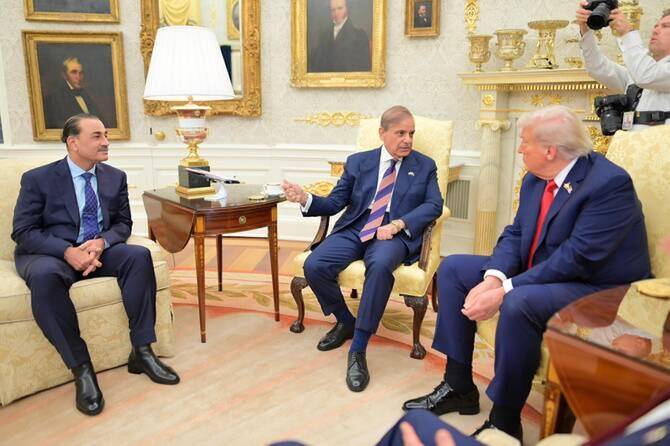A Meeting Months in the Making
In Washington this week, a significant moment unfolded as Pakistan’s Prime Minister Shehbaz Sharif and Army Chief Field Marshal Asim Munir were invited to the White House to meet President Donald Trump. This was Sharif’s first official meeting with Trump, and the presence of Munir added weight to the encounter, signaling that strategic and defense issues were part of the agenda.
The meeting came amid a backdrop of warming U.S.–Pakistan ties, following trade agreements and renewed dialogues after periods of strained relations.
What Sharif Brought to the Table
Shehbaz Sharif used the meeting to pitch Pakistan as a destination for American investment. He highlighted sectors such as agriculture, technology, mining, and energy as open to U.S. partnerships.
He also praised Trump’s role in attempting to steer peace in Gaza, describing him as a “man of peace” and commending his diplomatic efforts.
On security, counterterrorism cooperation featured prominently, with both sides discussing stronger collaboration.
The Symbolism and the Subtext
Having Asim Munir beside Sharif sent a strong signal: Pakistan’s military is part of the diplomatic equation, not sidelined. The visit underlines that Washington wants to engage not only politically but also through defense and security channels.
Trump, in media comments, called both Sharif and Munir “great” men, reinforcing the show of cordiality.
There was a small moment that captured attention: Sharif and Munir reportedly waited in the Oval Office for some time before being received. Some observers saw this as a breach of diplomatic protocol, while others viewed it as Trump’s informal style.
What Comes Next
The big question now is whether the words will translate into action. Some areas to watch include:
- Whether U.S. investment begins flowing into Pakistan’s prioritized sectors.
- How much defense and intelligence cooperation will deepen.
- Whether this meeting shifts Pakistan’s role in regional balances, especially regarding India, China, and Middle Eastern ties.
One thing is clear: this was more than just a photo opportunity. It signals a recalibration of U.S.–Pakistan relations, with both sides hoping for deeper cooperation and tangible outcomes.
















